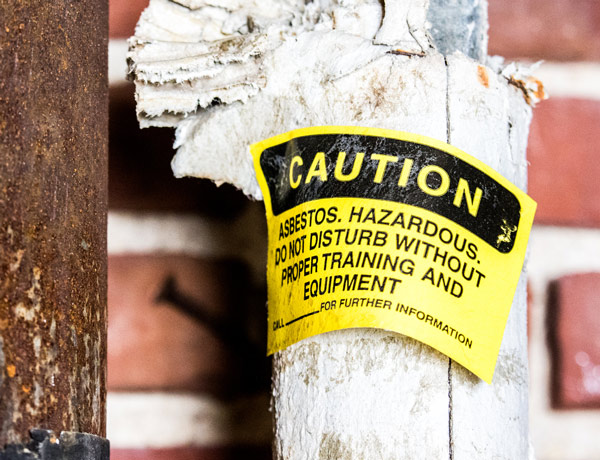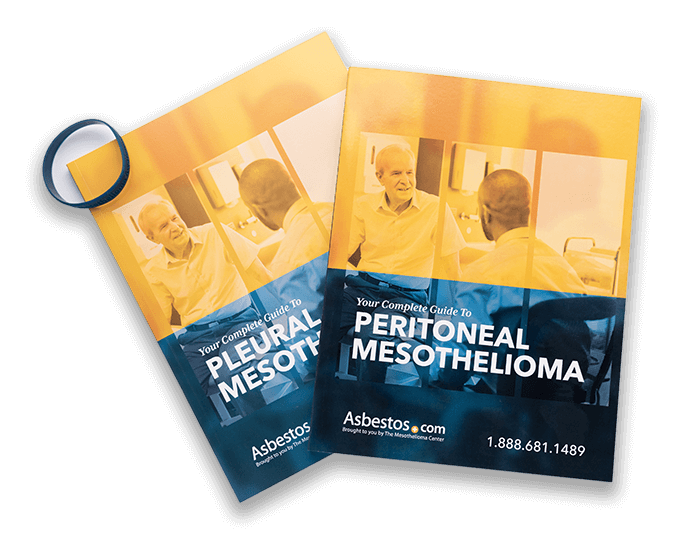Are Warning Labels Required on Asbestos Products?
Awareness & ResearchWritten by Daniel King | Edited By Walter Pacheco

Asbestos is not banned in the United States.
Imported products from countries such as Russia and China may contain the toxic mineral, which is linked to serious diseases including lung cancer and mesothelioma.
But you often won’t see asbestos warning labels on products in the U.S.
There are a few reasons for this. Certain uses of asbestos do not require warning labels. Manufacturers are often not required to check whether talc is asbestos-free.
Only a small number of specific products are banned from having asbestos under U.S. law.
The Clean Air Act of 1970 deserves credit for banning a few of the most dangerous product types: Block insulation, pipe insulation and spray-on insulation containing more than 1 percent asbestos.
In 1977, the Consumer Product Safety Commission banned asbestos in wall-patching compound as well.
But the list of asbestos uses banned by Toxic Substances Control Act (TSCA) in 1976 follows little rhyme or reason. For example:
-
Asbestos rollboard is banned, but not asbestos millboard.
-
Asbestos flooring felt is banned, but not asbestos roofing felt.
-
Asbestos paper is banned, but not asbestos cloth.
In 1989, the TSCA was expanded to ban almost all asbestos uses, but the federal government reversed the policy in 1991, leaving the regulation in its current state.
The U.S. Environmental Protection Agency (EPA) website details several examples of legal asbestos products. These include cement products, car parts and roofing and flooring materials.
Why You Usually Won’t See Asbestos Warning Labels
Employers and commercial building owners are required to mark areas and products that put people at risk of asbestos exposure. This rule is detailed in the Occupational Safety and Health Administration’s standard OSHA 1910.1001.
But there are two important exceptions:
-
First, if a product is less than 1 percent asbestos by weight, no warning label is required. Practically every raw material at any U.S. construction site could contain traces of asbestos without drawing any attention from the law.
-
Second, if asbestos fibers are fixed in a material so it won’t release toxic dust during any “reasonably foreseeable” use, no warning label is required.
This is why you won’t see warning labels on the many vinyl asbestos tile floors that remain in buildings across the country. The vinyl holds the asbestos fibers in place — until the flooring is removed.
Commercial asbestos removal must follow proper safety procedures. This includes putting up warning signs. Asbestos removal in private homes should follow proper guidelines as well — ideally by leaving it to professionals.
Asbestos Lawsuits Hold Companies Accountable
American manufacturers are not allowed to sell soft asbestos materials that can easily release dust. But there is technically nothing stopping them from mixing asbestos into durable goods such as plastic or cement products.
The reason U.S. companies don’t do this is legal liability.
Even if an asbestos product is safe once installed, the product’s full life cycle still puts people at risk.
Mining and processing asbestos can lead to toxic exposure for workers, their families and the surrounding community. And even once installed, asbestos materials can still endanger people performing renovation or demolition work.
Asbestos litigation is the longest-running mass tort in U.S. history. It has cost companies billions of dollars in settlements and legal damages paid to people with asbestos-related diseases.
As long as companies can be held accountable through personal-injury and wrongful-death lawsuits, U.S. manufacturers will have a powerful incentive not to use asbestos.
Sadly, this is not the case in countries such as Russia, Mexico and India, where governments allow companies to get away with using chrysotile asbestos all they want.
Asbestos-containing consumer products still find their way into the U.S. marketplace from international imports. The main culprits include after-market car parts and products containing talc.
Who Checks Talc for Asbestos?
If you went on a shopping trip and unknowingly picked up something that contains asbestos, chances are it would be a product made with asbestos-contaminated talc.
Unless the talc is medical-grade, no company or government organization is required to check talc for asbestos.
Media scrutiny and potential legal action are the only things discouraging companies from importing products such as crayons and cosmetics made with contaminated talc.
When asbestos-contamination is discovered, it is often because a concerned consumer or journalist sent samples to an independent lab for testing.
Regarding domestic talc, companies are now careful not to use contaminated sources in the United States. But the long latency period of asbestos-related diseases means people are still getting sick from contaminated talc mined many years ago.




